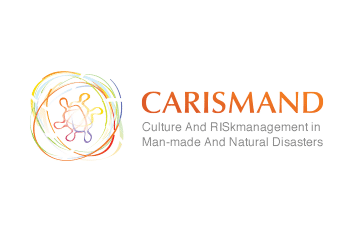
CARISMAND – Culture And RISkmanagement in Man-made And Natural Disasters
Project Overview
The project presents several objectives based on a multidisciplinary work. Objective 1: To understand the cultural factors that can influence citizens’ risk perceptions, emotions and risk behaviours in the context of man-made, natural and technical disasters, and to establish a sound theoretical basis for improving disaster policies and procedures.
Objective 2: To analyse the gap between the legal, political and regulatory contexts of different European countries.
Objective 3: Identify how disaster risk communication itself is rooted in culture and what cultural factors within disaster management organizations influence the effectiveness of professional management and response.
Objective 4: Understand cultural practices in order to improve warning systems and integrate the notion of risk into societies.
Objective 5: To analyse the adoption – or rejection – by citizens of different technologies for disaster preparedness, response and recovery.
Objective 6: Develop an active feedback loop between disaster management stakeholders and citizens to establish, test and refine solutions for culturally informed best practices in disaster management.
Objective 7: Develop a toolkit for disaster management.
Project Results
Two main results, a toolbox and a cultural map: The project has developed a toolkit that includes recommendations for stakeholders at all levels (disaster managers, policy makers, citizens) that include the implementation and/or improvement of policies and guidelines, educational measures and a roadmap for new knowledge transfer activities.
The Cultural Map is one of the results of the CARISMAND project and is a knowledge base, but with an intuitive and dynamic interface that follows the common thread between the actors present in the territory. The Cultural Map is composed of specific results referring to at least one disaster phase, the actor involved, the type of danger or the cultural factor.

